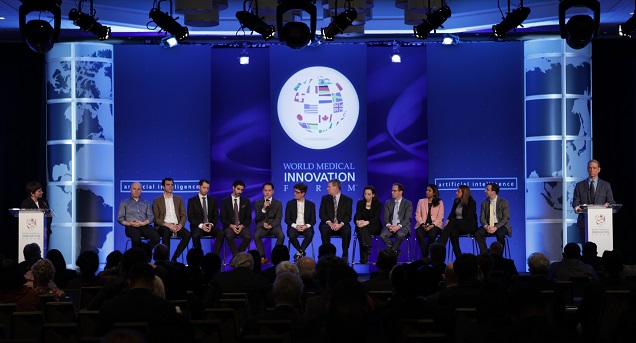3. EXPANDING ACCESS TO CARE IN UNDERSERVED OR DEVELOPING REGIONS

Shortages of trained healthcare providers, including ultrasound technicians and radiologists can significantly limit access to life-saving care in developing nations around the world.
More radiologists work in the half-dozen hospitals lining the renowned Longwood Avenue in Boston than in all of West Africa, the session pointed out.
Artificial intelligence could help mitigate the impacts of this severe deficit of qualified clinical staff by taking over some of the diagnostic duties typically allocated to humans.
For example, AI imaging tools can screen chest x-rays for signs of tuberculosis, often achieving a level of accuracy comparable to humans. This capability could be deployed through an app available to providers in low-resource areas, reducing the need for a trained diagnostic radiologist on site.
“The potential for this tech to increase access to healthcare is tremendous,” said Jayashree Kalpathy-Cramer, PhD, Assistant in Neuroscience at MGH and Associate Professor of Radiology at HMS.
Source: World Medical Innovation Forum 2018
However, algorithm developers must be careful to account for the fact that disparate ethnic groups or residents of different regions may have unique physiologies and environmental factors that will influence the presentation of disease.
“The course of a disease and population affected by the disease may look very different in India than in the US, for example,” she said.
“As we’re developing these algorithms, it’s very important to make sure that the data represents a diversity of disease presentations and populations – we can’t just develop an algorithm based on a single population and expect it to work as well on others.”
4. REDUCING THE BURDENS OF ELECTRONIC HEALTH RECORD USE
![]()
EHRs have played an instrumental role in the healthcare industry’s journey towards digitalization, but the switch has brought myriad problems associated with cognitive overload, endless documentation, and user burnout.
EHR developers are now using artificial intelligence to create more intuitive interfaces and automate some of the routine processes that consume so much of a user’s time.
Users spend the majority of their time on three tasks: clinical documentation, order entry, and sorting through the in-basket, said Adam Landman, MD, Vice President and CIO at Brigham Health.
Voice recognition and dictation are helping to improve the clinical documentation process, but natural language processing (NLP) tools might not be going far enough.
“I think we may need to be even bolder and consider changes like video recording a clinical encounter, almost like police wear body cams,” said Landman. “And then you can use AI and machine learning to index those videos for future information retrieval.
“And just like in the home, where we’re using Siri and Alexa, the future will bring virtual assistants to the bedside for clinicians to use with embedded intelligence for order entry.”
Artificial intelligence may also help to process routine requests from the inbox, like medication refills and result notifications. It may also help to prioritize tasks that truly require the clinician’s attention, Landman added, making it easier for users to work through their to-do lists.